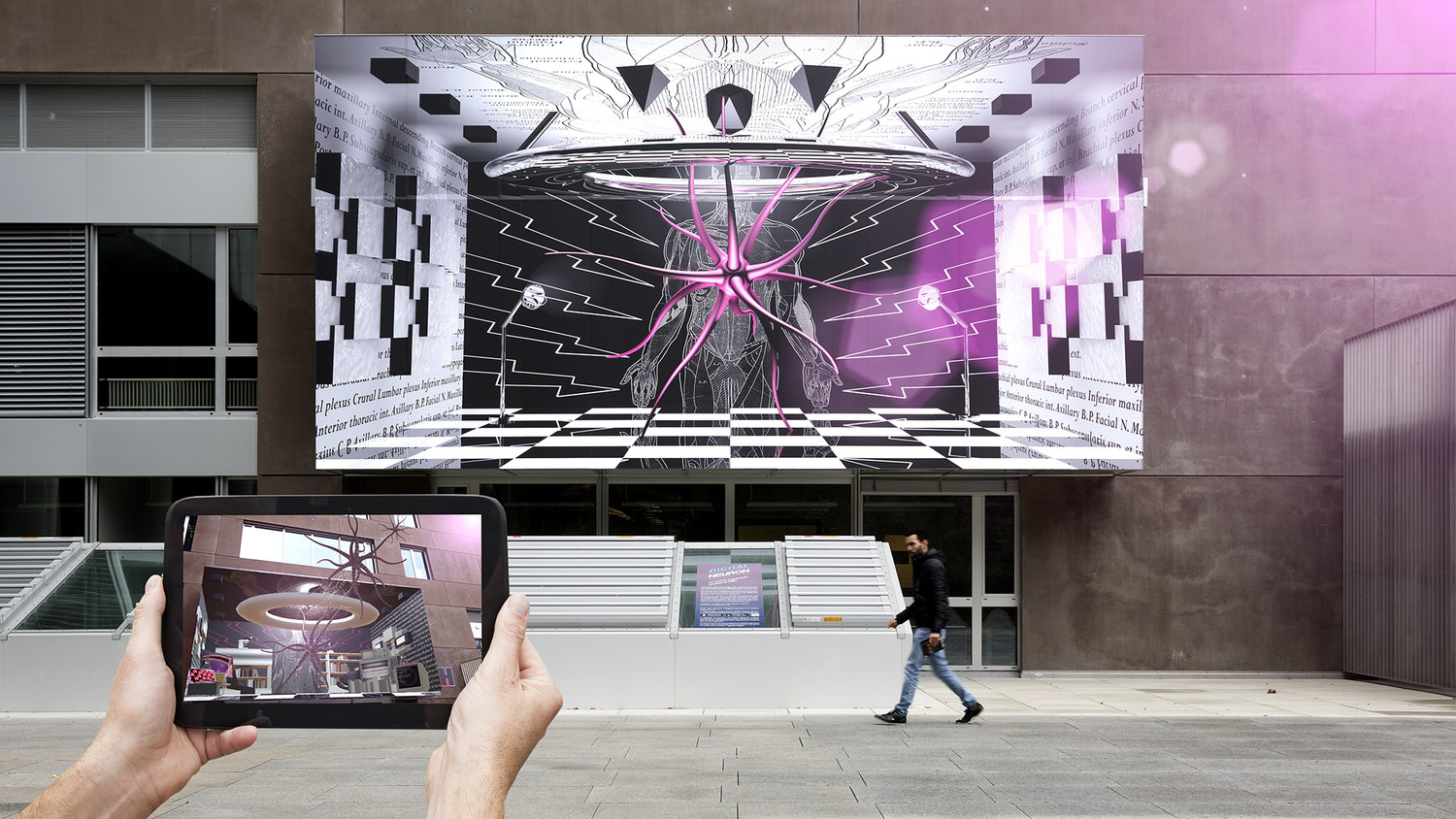Architects: Want to have your project featured? Showcase your work through Architizer and sign up for our inspirational newsletters.
Nestled in the heart of America, Arkansas is rich in natural beauty and cultural heritage. Known for its picturesque landscapes, including the majestic Ozark Mountains and the winding Arkansas River, the state’s architecture is grounded in its natural surroundings. Arkansas architecture is unique for its blend of historical styles, regional influences, and innovative design approaches. The state boasts a variety of structures and construction approaches that contribute to a diverse built environment.
Today, architects in Arkansas are embracing a design ethos that not only pays homage to the state’s stunning landscapes but also seeks to create a deeper connection between the built environment and nature. This approach goes beyond mere aesthetics, as architects integrate sustainable materials and innovative design concepts to harmonize with the surrounding environment. The following ten projects showcase these ideas and highlight Southern design in cities throughout the state.
Crystal Bridges Museum of American Art
By Safdie Architects, Bentonville, Arkansas
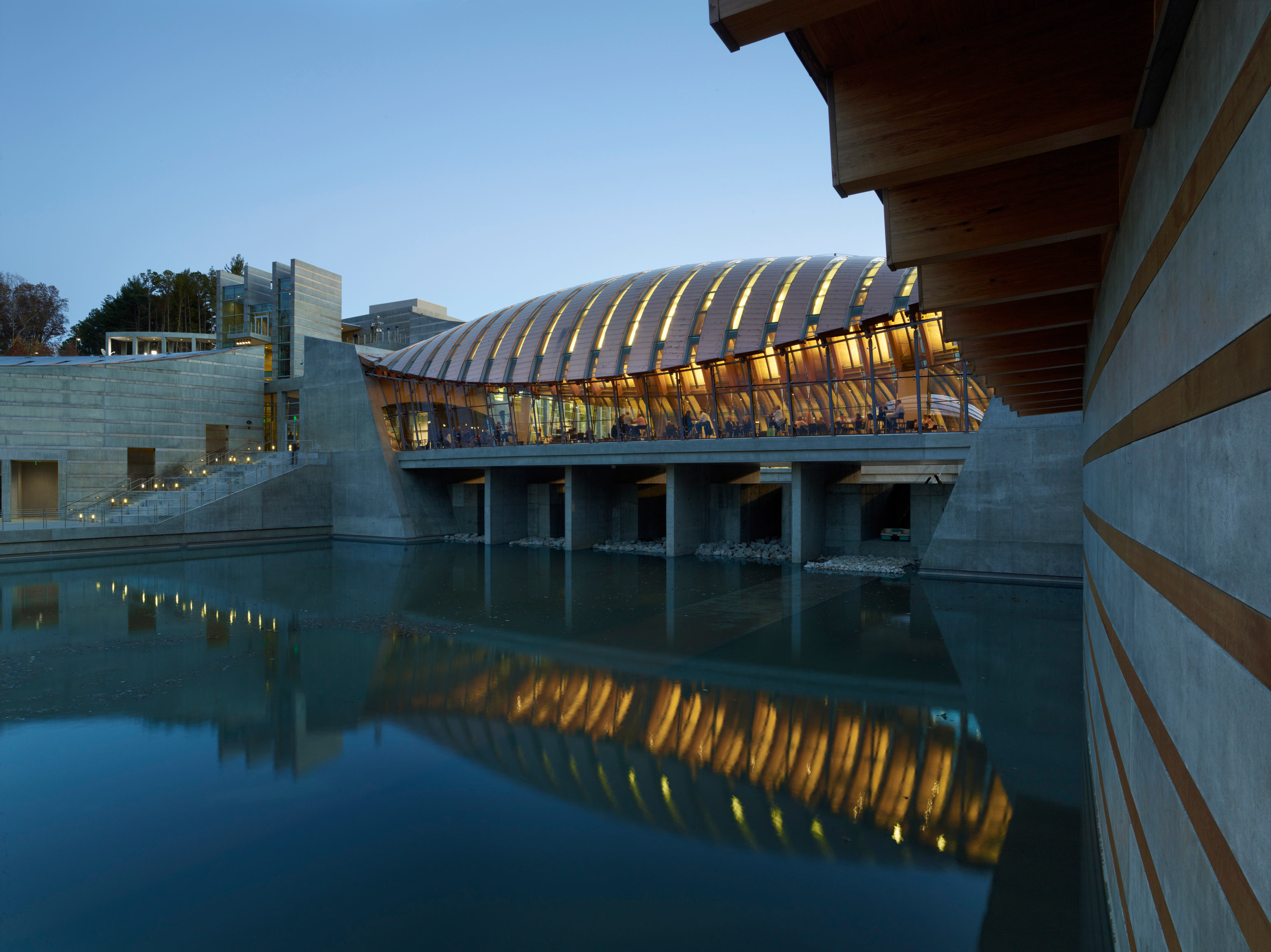
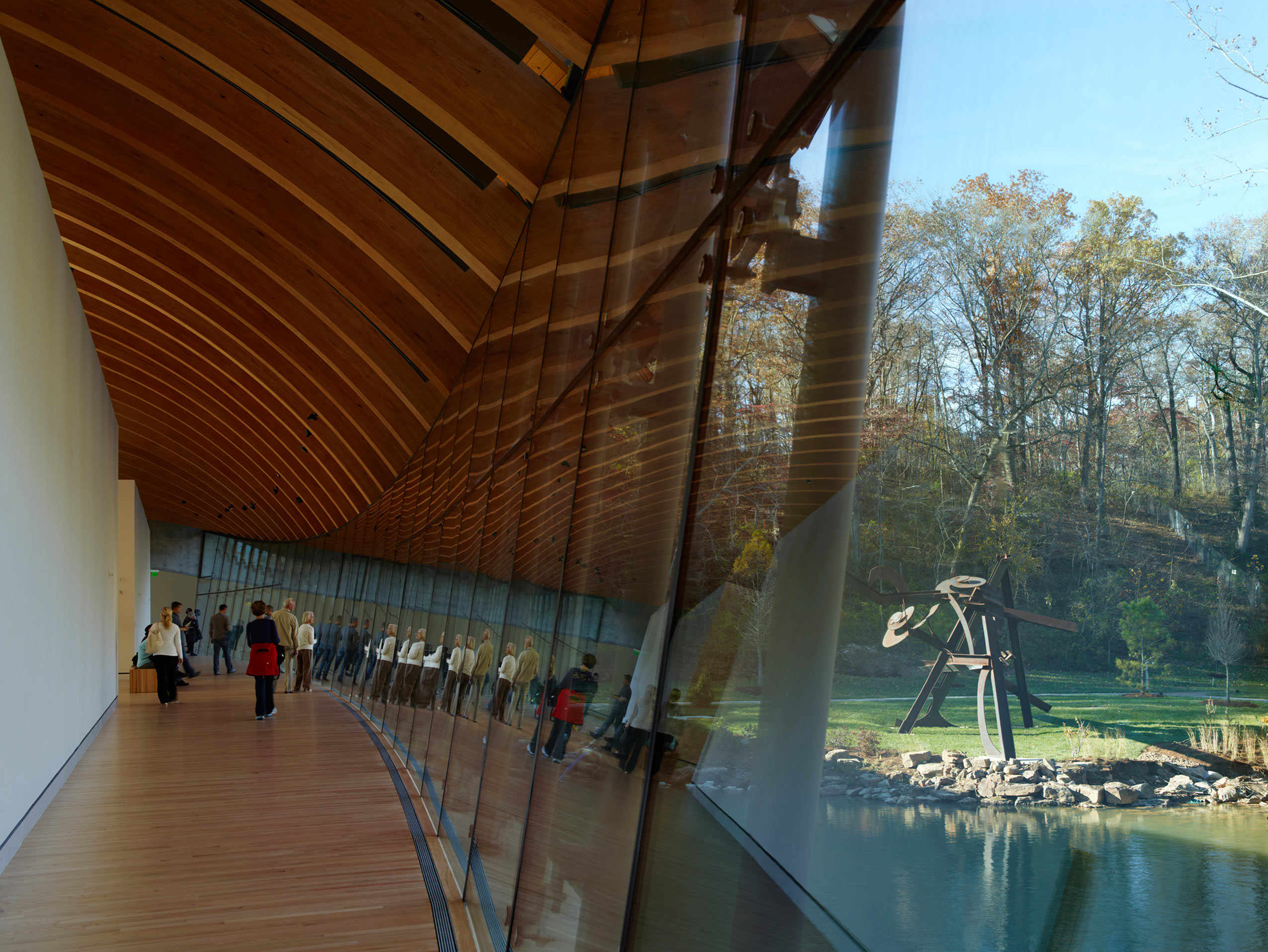
 Crystal Bridges Museum of American Art is situated on 120 acres of Ozark landscape, nestled within a ravine and flanked by hills. The museum’s design aimed to harmonize art and nature, with visitors entering from the hill’s crest for a dramatic view of the complex. Eight pavilions, including galleries, a library, educational spaces, and a restaurant, are clustered around two ponds, connected by bridge-like structures that act as dams and bridges. The architecture draws on regional materials, with concrete walls and colonnades supporting laminated wood roofs made of Arkansas white pine, blending seamlessly with the surroundings.
Crystal Bridges Museum of American Art is situated on 120 acres of Ozark landscape, nestled within a ravine and flanked by hills. The museum’s design aimed to harmonize art and nature, with visitors entering from the hill’s crest for a dramatic view of the complex. Eight pavilions, including galleries, a library, educational spaces, and a restaurant, are clustered around two ponds, connected by bridge-like structures that act as dams and bridges. The architecture draws on regional materials, with concrete walls and colonnades supporting laminated wood roofs made of Arkansas white pine, blending seamlessly with the surroundings.
The museum’s layout encourages a flow between indoor and outdoor spaces, with galleries offering views of the landscape. Outdoor areas, such as an entry courtyard and a crescent garden overlooking the pond, provide diverse settings for activities. The design also incorporates sustainable features, such as skylights and materials that age naturally, like the copper-clad roofs. The result is a building that resonates with the spirit of the Ozarks, creating a unique and immersive experience for visitors.
Mid-America Science Museum Science Skywalk
By Wittenberg Delony & Davidson Architects, Bentonville, Arkansas
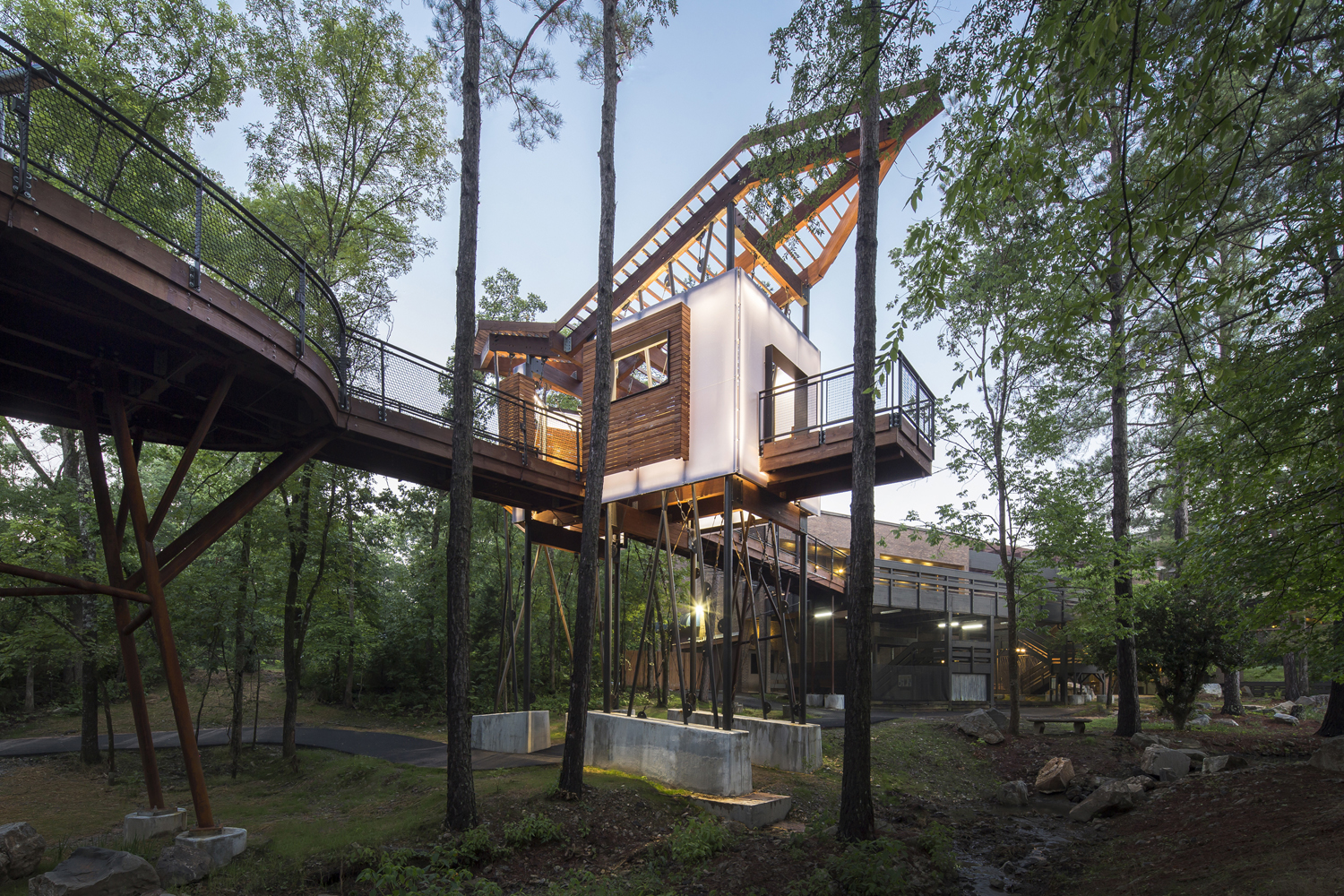
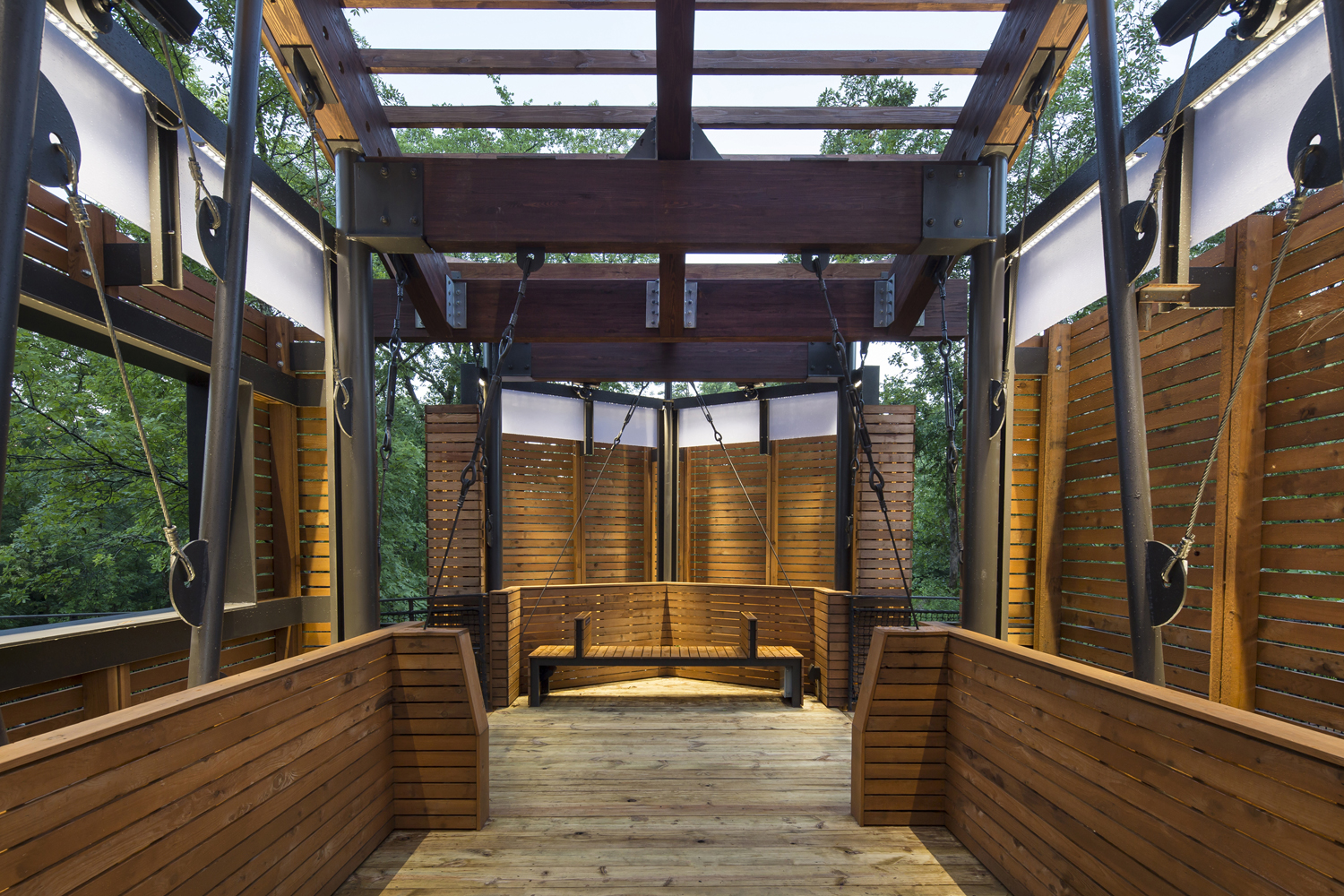 Mid America Science Museum (MASM) at the Donald W. Reynolds Center, located in Hot Springs, Arkansas, has been a leading interactive science center since its establishment in 1979. MASM received a substantial grant from the Donald W. Reynolds Foundation to revamp the museum, introduce new interactive exhibits, and create an outdoor science skywalk focused on adventure and learning. The renovation aimed to enhance visitor experience by utilizing the museum’s wooded surroundings and existing facilities, while emphasizing hands-on learning and adventure.
Mid America Science Museum (MASM) at the Donald W. Reynolds Center, located in Hot Springs, Arkansas, has been a leading interactive science center since its establishment in 1979. MASM received a substantial grant from the Donald W. Reynolds Foundation to revamp the museum, introduce new interactive exhibits, and create an outdoor science skywalk focused on adventure and learning. The renovation aimed to enhance visitor experience by utilizing the museum’s wooded surroundings and existing facilities, while emphasizing hands-on learning and adventure.
The new science skywalk immerses visitors in the natural landscape, featuring bridges, ramps, and tree-top observation platforms with interactive science exhibits. The skywalk’s design incorporates materials such as cedar slats, weathering steel columns, heavy timber framing, and rope netting, blending seamlessly with the environment. Additionally, a tree-house icon serves as a focal point, housing a musical bench and a cantilevered observation deck, further enhancing the museum’s appeal as a unique and educational destination.
University of Arkansas Art + Design District: Sculpture Studio
By modus studio, Fayetteville, Arkansas
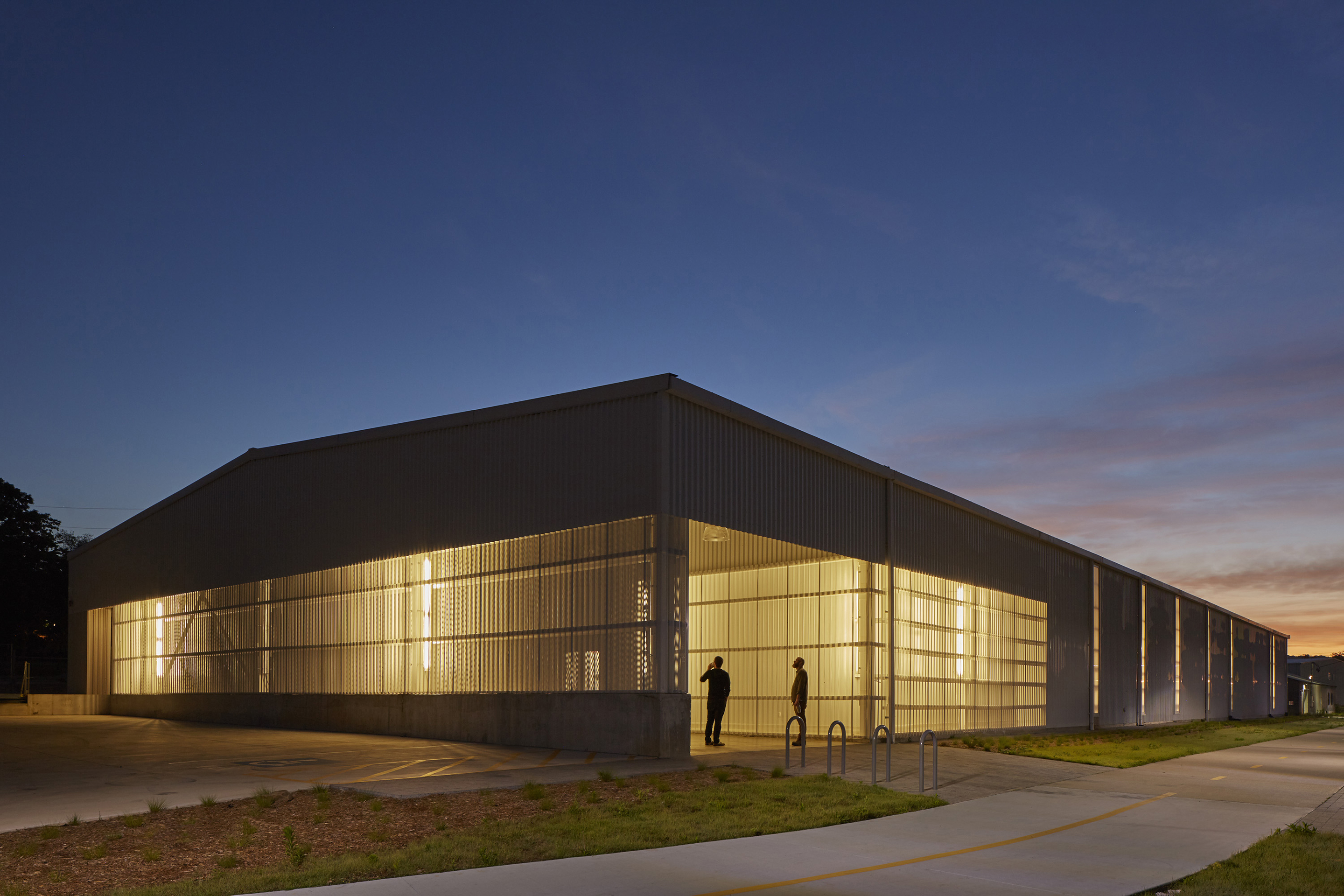
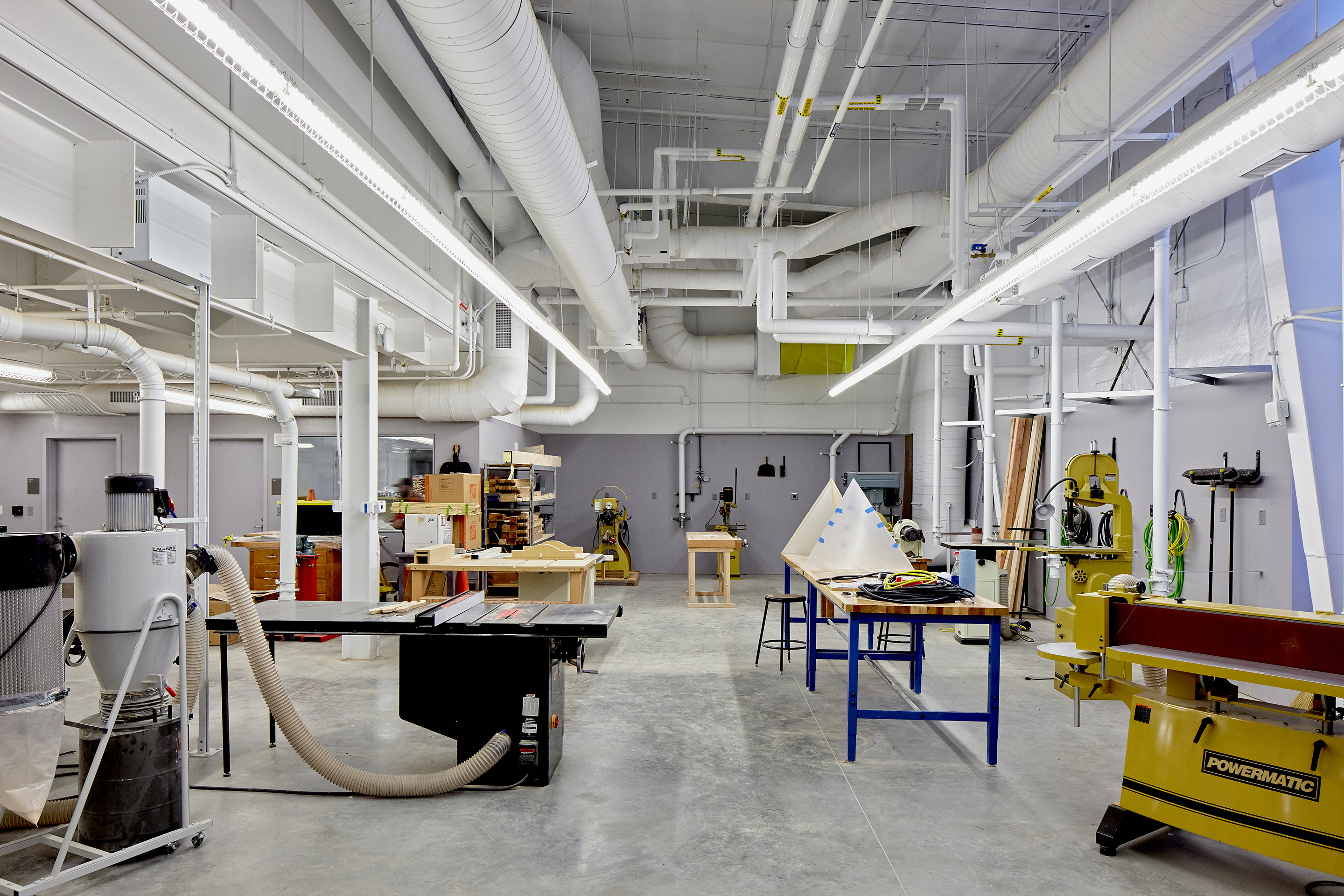
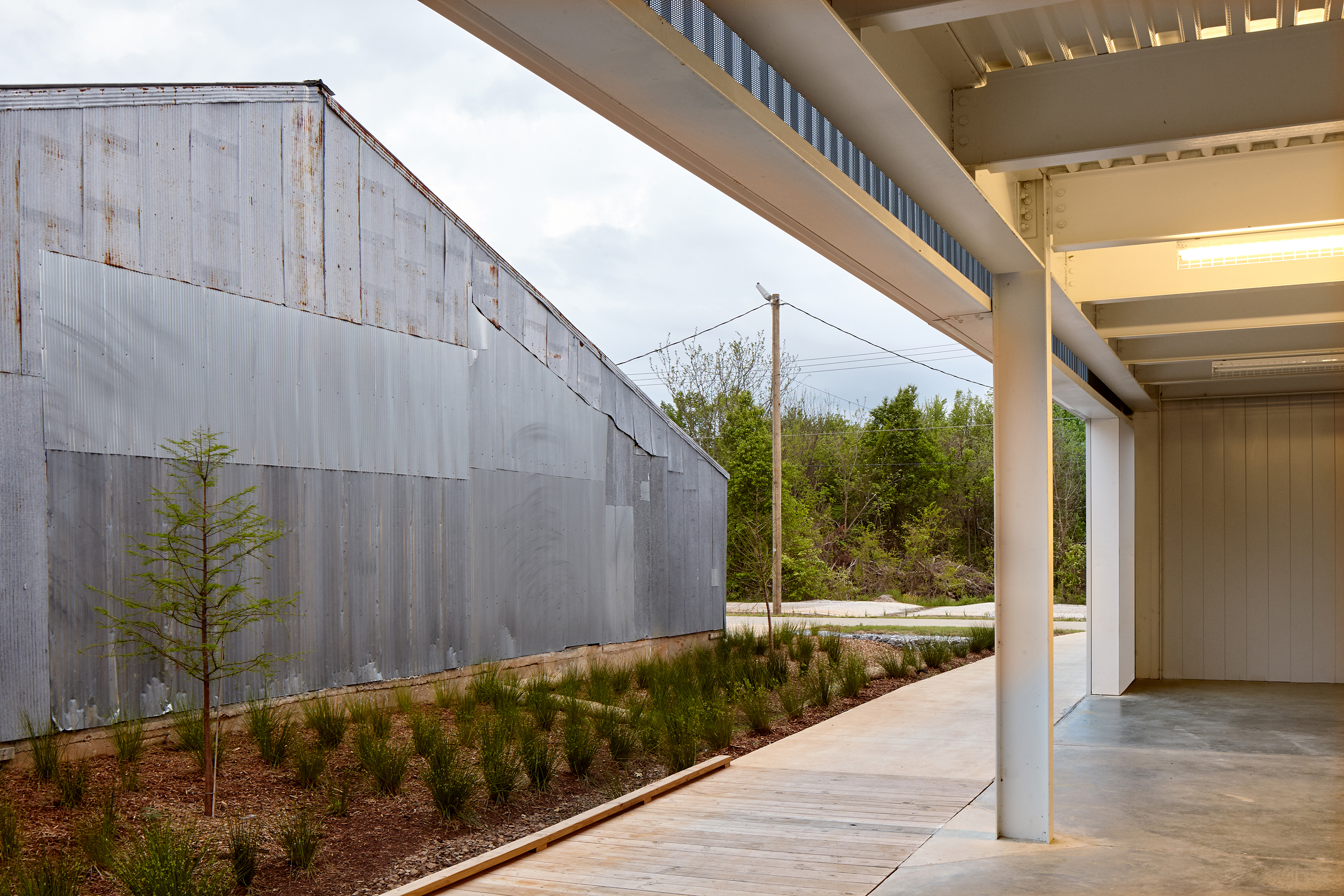 The new sculpture studio facility for the University of Arkansas Art Department is situated in a 3.8-acre raw industrial brownfield block in south Fayetteville. It was built as the inaugural building in a new remote district of the campus. In collaboration with el dorado inc, an existing warehouse structure has been reimagined and expanded into a sleek and functional form, housing intricate programming for the art department. The design efficiently utilizes the existing frame by introducing a second floor within the volume, creating a bright and open space that interconnects students, faculty, and the public through studios, galleries, and exterior porches.
The new sculpture studio facility for the University of Arkansas Art Department is situated in a 3.8-acre raw industrial brownfield block in south Fayetteville. It was built as the inaugural building in a new remote district of the campus. In collaboration with el dorado inc, an existing warehouse structure has been reimagined and expanded into a sleek and functional form, housing intricate programming for the art department. The design efficiently utilizes the existing frame by introducing a second floor within the volume, creating a bright and open space that interconnects students, faculty, and the public through studios, galleries, and exterior porches.
Spanning 33,000 square feet, the facility features open, well-lit studio spaces, ample corridors for display and critique, and durable walls for presenting student work. The lighting is both efficient and flexible, while the neutral environments are purposefully designed to highlight the work being produced. Situated along the Tsa La Gi trail, the project fosters connections with the broader Fayetteville community, offering unique learning opportunities for students and faculty by engaging with cultural activities outside the university.
Arkansas Studies Institute
By Polk Stanley Wilcox Architects, Little Rock, Arkansas

 The Arkansas Studies Institute is a repository for 10 million historic documents and the papers of seven Arkansas Governors, including President William Jefferson Clinton. Situated in an entertainment district near the Clinton Library, the design blends neglected 1880s and 1910s buildings with a new archive addition, creating a pedestrian-focused gateway to the library campus. The architecture, by Polk Stanley Wilcox Architects, is inspired by the concept of a book, with curving glass walls representing open pages.
The Arkansas Studies Institute is a repository for 10 million historic documents and the papers of seven Arkansas Governors, including President William Jefferson Clinton. Situated in an entertainment district near the Clinton Library, the design blends neglected 1880s and 1910s buildings with a new archive addition, creating a pedestrian-focused gateway to the library campus. The architecture, by Polk Stanley Wilcox Architects, is inspired by the concept of a book, with curving glass walls representing open pages.
Patrons walk through the pages of history, transitioning from new to historic spaces. A thin atrium stretches the building’s length, flooding all levels with light, and 100 historic images in the atrium’s glass handrails engage in storytelling. Public spaces like galleries and a museum enliven streetscape storefronts, while the great research hall occupies the second floor of the 1914 building. Suspended bridges connect new and old, symbolizing the connection between today and yesterday.
Adohi Hall at University of Arkansas
By Leers Weinzapfel Associates and modus studio, Fayetteville, Arkansas


 Adohi Hall, a new campus gateway and residential college, prioritizes a creative live-learn environment in a relaxed, tree-lined landscape, re-imagining University Housing. Situated at the southern edge of the campus, it fosters a vibrant live/learn community with retail dining, classrooms, maker-spaces, and more, offering 700 beds primarily for sophomore students. The design features interconnected buildings arranged in a sinuous configuration within a forested landscape, creating connected communal outdoor spaces.
Adohi Hall, a new campus gateway and residential college, prioritizes a creative live-learn environment in a relaxed, tree-lined landscape, re-imagining University Housing. Situated at the southern edge of the campus, it fosters a vibrant live/learn community with retail dining, classrooms, maker-spaces, and more, offering 700 beds primarily for sophomore students. The design features interconnected buildings arranged in a sinuous configuration within a forested landscape, creating connected communal outdoor spaces.
Sustainability is key, with initiatives such as Mass Timber construction and efficient mechanical systems, and when built, it was the largest cross laminated timber building in the US. Adohi Hall is part of a larger Master Plan by Leers Weinzapfel, envisioning the southeastern boundary for future growth of the University, including housing, parking, and pedestrian pathways. Through an integrated design process, decisions were made early on, considering systems, costs, and campus connectivity to efficiently address future needs.
University of Arkansas Library Storage Facility
By MBL Architecture Interiors Planning, Fayetteville, Arkansas

 In 2009, a study of Mullins Library at the University of Arkansas identified the need to renovate the space to better serve its 30,000 students. To make room for a modern library, nearly two million volumes had to be relocated to a new high-density storage building. The first step was selecting a site south of the campus, which involved studying various configurations and locations.
In 2009, a study of Mullins Library at the University of Arkansas identified the need to renovate the space to better serve its 30,000 students. To make room for a modern library, nearly two million volumes had to be relocated to a new high-density storage building. The first step was selecting a site south of the campus, which involved studying various configurations and locations.
The 28,000-square-foot, fifty-foot-tall storage facility was initially designed as a concrete block box with a concrete roof deck for protection. However, the architects explored using a mass timber frame and cross laminated timber (CLT) wall system, a first for middle America. Completed in 2018, the building features charred wood siding, metal panels and stone cladding, and achieved LEED gold certification.
William J. Clinton Presidential Center
By Ennead Architects, Bentonville, Arkansas


 The design of this Presidential complex in Little Rock maximizes public park acreage, connects downtown with North Little Rock, and preserves a historic railroad station bridge. The Center’s elevated structure allows a new city park to flow underneath, emphasizing connection and referencing the “Six Bridges” crossing the Arkansas River. The refurbished Choctaw Station now houses the Clinton Public Policy Institute and Clinton School of Public Service, and the Rock Island Railroad Bridge serves as a pedestrian crossing to North Little Rock.
The design of this Presidential complex in Little Rock maximizes public park acreage, connects downtown with North Little Rock, and preserves a historic railroad station bridge. The Center’s elevated structure allows a new city park to flow underneath, emphasizing connection and referencing the “Six Bridges” crossing the Arkansas River. The refurbished Choctaw Station now houses the Clinton Public Policy Institute and Clinton School of Public Service, and the Rock Island Railroad Bridge serves as a pedestrian crossing to North Little Rock.
The luminous presidential library symbolizes the optimism of the Clinton administration and exemplifies an architecture of democracy. Clad in glass and metal, the building’s cantilevered form emphasizes connections and includes a 240-foot-long, forty-foot-high exhibition space. It is oriented perpendicular to the river, with its main entrance on axis with downtown Little Rock, reinforcing urban design goals to transform the area.
Harvey Pediatric Clinic
By Marlon Blackwell Architects, Rogers, Arkansas


 The Harvey Pediatric Clinic in Rogers, stands out as a modern healthcare facility in the midst of a suburban landscape. Its bold profile and cayenne-colored metal panel on the south elevation create a striking contrast with the surrounding beige tones. This design choice not only establishes the clinic’s identity but also provides a strong presence along South 52nd Street, the main commercial corridor in the area.
The Harvey Pediatric Clinic in Rogers, stands out as a modern healthcare facility in the midst of a suburban landscape. Its bold profile and cayenne-colored metal panel on the south elevation create a striking contrast with the surrounding beige tones. This design choice not only establishes the clinic’s identity but also provides a strong presence along South 52nd Street, the main commercial corridor in the area.
Inside, the clinic features a thoughtful layout with exam rooms organized along a loop corridor for easy navigation. Natural light floods the interior, with skylights over nurses’ stations and a blue glass skylight above the entrance stairwell, creating a calming atmosphere. The building’s design reflects a holistic approach to medicine, enhancing the patient experience and setting a new standard for medical office architecture.
Vol Walker Hall and the Steven L. Anderson Design Center
By Marlon Blackwell Architects, Fayetteville, Arkansas
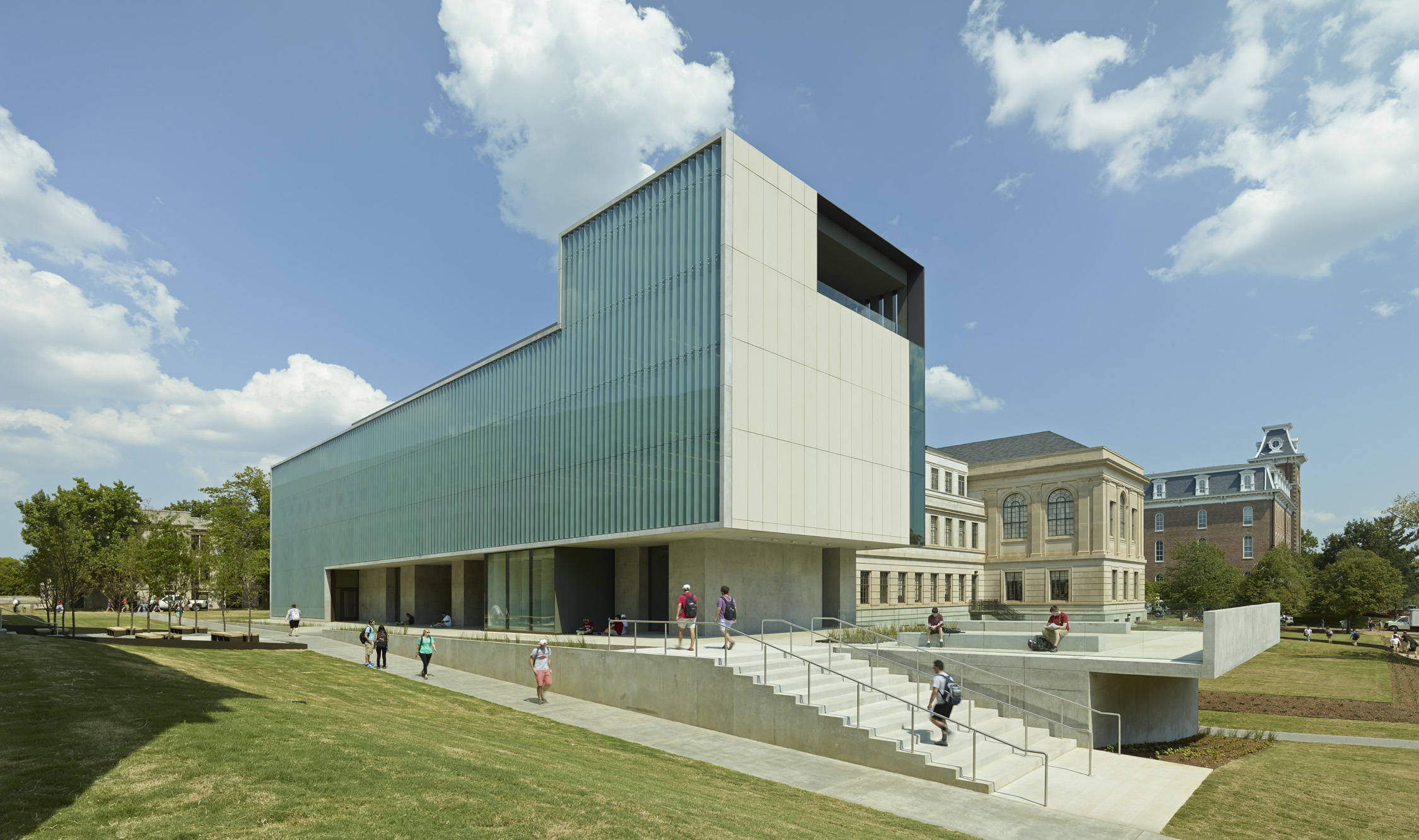

 The Fay Jones School of Architecture at the University of Arkansas underwent a significant transformation, merging the historic Vol Walker Hall with the modern Steven L. Anderson Design Center. This hybrid complex houses the Architecture, Landscape Architecture, and Interior Design programs under one roof. To achieve this integration, 13,000 square feet of library space in Vol Walker Hall were removed, creating a seamless connection to the new addition and allowing for circulation along the main campus axis. The new entry is inviting and accessible, leading to an exhibition gallery and central displays. Twin stairwells between the restoration and addition bring daylight and activity into the building, fostering a sense of connection between old and new.
The Fay Jones School of Architecture at the University of Arkansas underwent a significant transformation, merging the historic Vol Walker Hall with the modern Steven L. Anderson Design Center. This hybrid complex houses the Architecture, Landscape Architecture, and Interior Design programs under one roof. To achieve this integration, 13,000 square feet of library space in Vol Walker Hall were removed, creating a seamless connection to the new addition and allowing for circulation along the main campus axis. The new entry is inviting and accessible, leading to an exhibition gallery and central displays. Twin stairwells between the restoration and addition bring daylight and activity into the building, fostering a sense of connection between old and new.
The addition also addresses previous issues with the central gallery, now transformed into a vibrant gathering space with improved light and acoustics. Studio and critique spaces, along with a new 200-seat auditorium, enhance the functionality of the building. Architectural concrete and Indiana limestone cladding pay homage to the historic Vol Walker Hall, while a fritted glass brise-soleil and custom curtain wall illustrate modern construction and environmental strategies.
Railyard Park
By Ross Barney Architects, Rogers, Arkansas
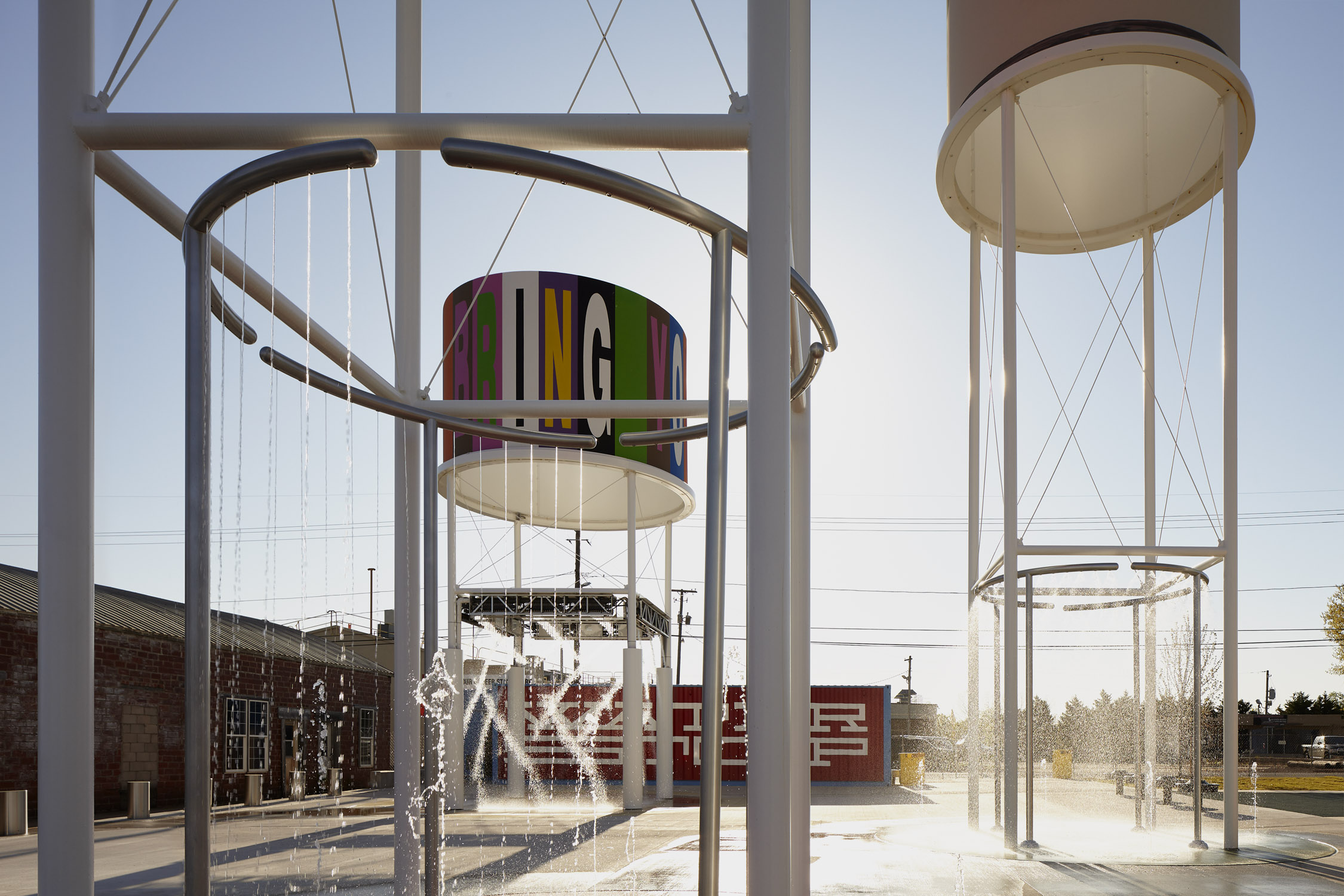
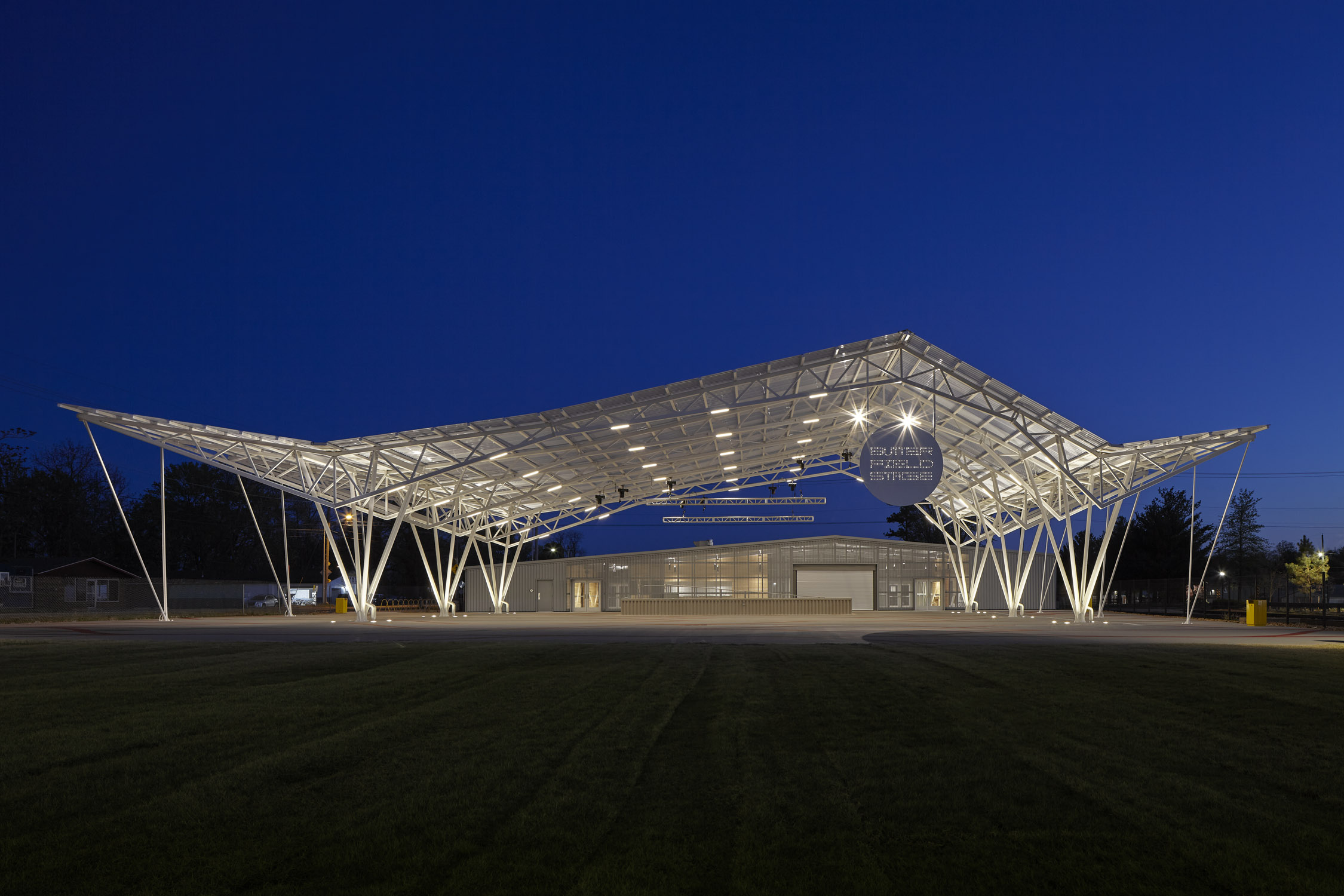
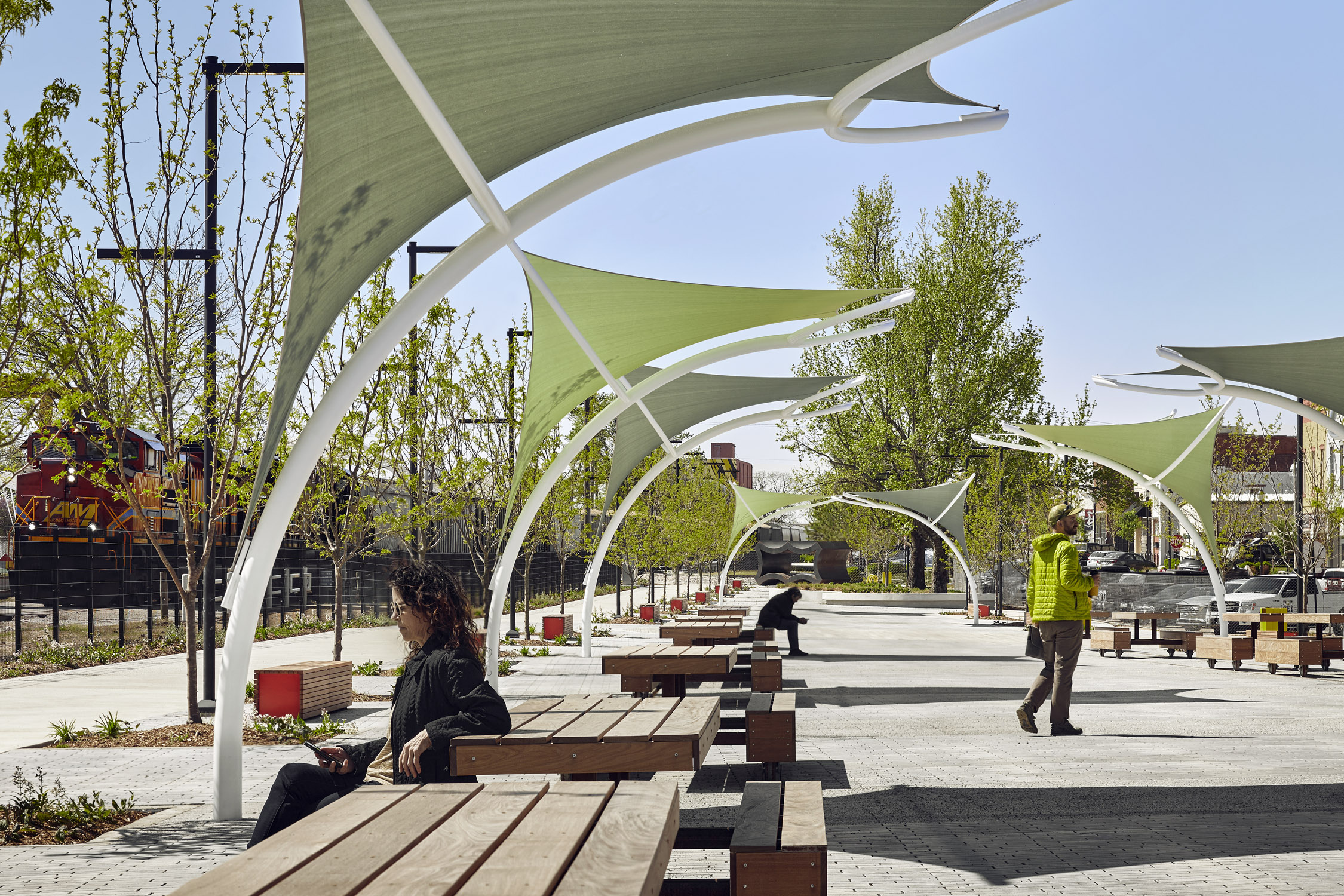 The City of Rogers, Arkansas, with a grant from the Walton Family Foundation, constructed a new downtown park to boost economic development, promote placemaking, and enhance community and regional connectivity. Located in the historic district, this park has transformed downtown Rogers into a regional attraction, building upon recent investments in the area.
The City of Rogers, Arkansas, with a grant from the Walton Family Foundation, constructed a new downtown park to boost economic development, promote placemaking, and enhance community and regional connectivity. Located in the historic district, this park has transformed downtown Rogers into a regional attraction, building upon recent investments in the area.
Community engagement was central to the park’s design, with over 1,000 responses collected through a digital survey and in-person charrettes. This input guided the park’s development, ensuring it meets the needs and desires of residents. The park features several plazas hosting a regional farmers market, a children’s play-yard with water features, and a stage for concerts and festivals. This vibrant civic space serves the community throughout the day, week, month and year, making it a valuable asset for Rogers.
Architects: Want to have your project featured? Showcase your work through Architizer and sign up for our inspirational newsletters.





 Arkansas Studies Institute
Arkansas Studies Institute  Harvey Pediatric Clinic
Harvey Pediatric Clinic  Mid-America Science Museum Science Skywalk
Mid-America Science Museum Science Skywalk  University of Arkansas Art + Design District: Sculpture Studio
University of Arkansas Art + Design District: Sculpture Studio  University of Arkansas Library Storage Facility
University of Arkansas Library Storage Facility  Vol Walker Hall and the Steven L. Anderson Design Center
Vol Walker Hall and the Steven L. Anderson Design Center  William J. Clinton Presidential Center
William J. Clinton Presidential Center 
